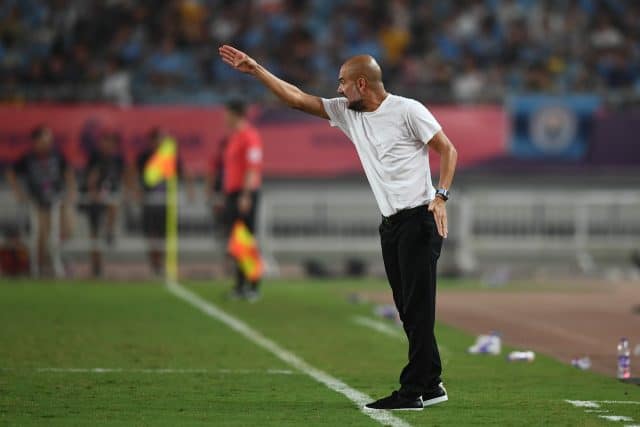How CIOs can mold apps into a winning team by emulating Pep Guardiola and Jürgen Klopp

In the modern enterprise, CIOs play a similar role to a football manager: bringing together multiple puzzle pieces to create a squad that can achieve great things. If Ted Lasso taught us anything, it’s that to win the Premier League, managers can’t just focus on the individual flair of one or two key players -- they must build a team that supports one another and performs well as a single unit.
Just look at Pep Guardiola and Jürgen Klopp, who have been among the most successful coaches in recent years. Despite having the funds available, they resist the temptation to purchase a raft of new players every year, instead focusing on getting their existing squad performing together -- and CIOs should take the same approach with workplace technology.
Leadership lessons
Rather than making endless investments in the next latest 'must-have' applications and services, CIOs must consider what their existing tech stack is capable of, and whether it’s being used to its full potential. Of the 5 percent IT spending increase projected by Gartner this year, much of the $4.5 trillion set to be outlaid could be left in the bank if existing applications were used to the best of their ability.
To make the most of what they have and drive better adoption across all of their enterprise application, CIOs should take inspiration from the likes of Klopp and Guardiola. Here are three key areas these two football managers excel at, which CIOs should also look to follow:
- Choose your formation and playing style. Successful leaders typically set their own clear style from the outset, both on the pitch and in the boardroom. Just as Klopp’s Liverpool team plays using his counter-pressing ('Gegenpressing') philosophy, CIOs need a set strategy of their own, whether that’s setting out what ideal workflows looks like, or a target for adoption of apps across the business. Here, it’s important to step back and think about the specific function they want a combination of different apps to play, and whether this will be different across departments or job roles. To lay firm foundations and complete this first step, CIOs must know what the end user needs to achieve, and ensure it’s been made clear how the combination of apps they have been given will enable them to succeed.
- Analyze player performance. Guardiola often makes the point that it is important for coaches to watch player performance closely. CIOs must adopt a similar approach, working to gain an understanding of exactly how all their software and apps are currently being used by employees -- what are their strengths and weaknesses, and ultimately what are they contributing to workflows and business outcomes? This helps to identify and address fundamental problems, such as the fact that an app they assumed would be universally adopted across the workforce is only being used by 20 percent of them. Having visibility over performance and adoption of apps enables them to analyze why things aren’t going to plan -- for example, understanding where employees may be getting stuck or encountering issues, or where functionality is duplicated across multiple apps, wasting employee time and, potentially, company money on needless licenses.
- Make a timely substitution. A good leader is able to change things in-play, like when Klopp brought on Divock Origi in the second half of Liverpool’s 2019 Champions League final, and the substitute’s late goal helped secure the trophy. CIOs must also be ready to change the way their 'squad' of applications is working if they identify a problem or spot an opportunity to do things better. If they gather the intelligence outlined in the previous step, but don’t act upon it, the business will feel no benefit whatsoever. Simply put, now is the time to act.
For example, if they suspect adoption of an app is low because employees are getting stuck or encountering issues they must find the data to confirm their suspicions and resolve the issues. One way to do this is by using a digital adoption platform (DAP). DAPs exist as a layer above software and apps providing customized user guidance and data visibility leading to increased technology adoption and better user experiences. This technology pin-points where users are getting stuck, frustrated, or giving up within these apps and allows for solutions to be deployed to improve the user experience right there on the screen. If functionality is duplicated across multiple apps, they should guide employees through the best workflow, and check whether they are getting value out of all their licenses.
Lifting the trophy
With the tech stack getting bigger every year, and digital technologies playing an increasingly central role in many businesses during the pandemic, the challenges facing CIOs continue to get harder. You could argue digital adoption has never been more mission-critical.
With the pressure ramping up, it’s time to step forward and be a confident leader -- which is where CIOs can take inspiration from leading coaches like Klopp and Guardiola. This means covering the key bases of setting out their 'tactics' -- laying out what ideal workflows, adoption levels, and business outcomes look like, then analyzing, before finally taking corrective action based on this intelligence. If they can complete these three steps, CIOs can be confident that their tech stack is giving employees and customers a great experience and prepare to lift a (sadly metaphorical!) trophy above their heads.
Image credit: ChinaImages/depositphotos.com
Simon Blunn is Vice President and EMEA General Manager at WalkMe.